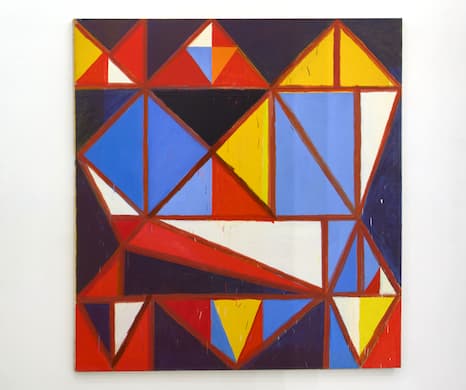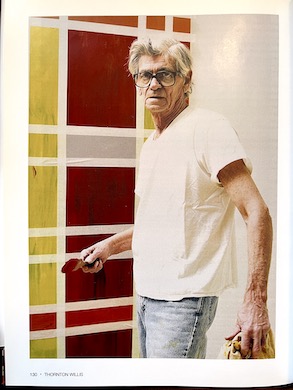Thornton Willis, Illuminating the Future of Abstract Art
These shows confirm Willis’s preeminence even while his work already resides at the Museum of Modern Art, the Whitney Museum, and the Guggenheim Museum.

If you don’t know the bright and bold art of one of the greatest painters of our time, Thornton Willis, April is the month to rectify the situation.
Mr. Willis, a resident of New York since 1967, is getting his due as a leading light of abstract expressionist painting, which eschews representation for the autonomous power of colors and shapes.
The David Richard Gallery is mounting shows in its two spaces, one at Chelsea, the other at Harlem. Titled, “Thornton Willis, A Painting Survey, Six Decades: Works from 1967 – 2017,” the first runs until April 29, and the second is on view until May 6.
A concurrent exhibition is at the Sarah Moody Gallery of Art at the University of Alabama at Tuscaloosa, where the artist studied in the mid-1960s under revered painter Melvin Price.
These shows confirm Mr. Willis’s preeminence even while his work already resides at the Museum of Modern Art, the Whitney Museum, and the Guggenheim Museum.
Mr. Willis’s work illuminates the fact that abstract expressionism abides with liveliness, due in part to his efforts. His paintings continue to resonate long after he first came of age as an inheritor of the ideas of “The New York School” coterie in midcentury Manhattan. In asserting continuance of the decades-old experiment, Mr. Willis stakes out a tradition tethered to the potency and probity of pure visual form itself and the potential for communication it carries.

Partly because of Mr. Willis’s work and his longevity — he is now 86 — the abstract expressionism movement can no longer be discounted as a period style limited to the 1940s and 1950s. Just as the approaches pioneered during the Renaissance have guided painters for seven centuries, so too abstraction — and the work of Mr. Willis — continue to serve as an invaluable guide to making art.
Mr. Willis recalls that in his early years he “was simultaneously attracted to the ideas prevalent in gestural painting” and drawn “to the more reductive or cooler forms of expression.” The painter sought to “meld these two interests.”
Reflecting on developments across his own work over the years, Mr. Willis says “these ideas have lives of their own, and we go back to them, give them new life and bring them forward, changed by time just as we have changed.”
There are artists, Mr. Willis among them, who feel that the abstract art of the New York School, itself the fruit of a rich artistic vine, is an heir to the traditions of image making.
Abstract expressionism encompasses a philosophy that avoids narrative and conceptual and political veneers as distractions from art, which renders it unfashionable in these hyper-politicized times.
However, the eschewing of figuration and narrative remains a beacon for those artists who reject, or ignore, or bypass much that has happened in the half century of academic fashion in favor of the power and poetry of visual form.
Mr. Willis is a stalwart of this cohort and should be widely acclaimed as one of our top artists. That his name is a blank to some is damning evidence that the recognition of quality has eroded. He has kept the creative flame lit throughout nearly five decades of attack by anti-art sentiments inspired by Andy Warhol’s quip that “art is anything you can get away with.”
Not so in Thornton Willis’s paintings. In his shapes and colors, he paints abstract art’s radiant future.

